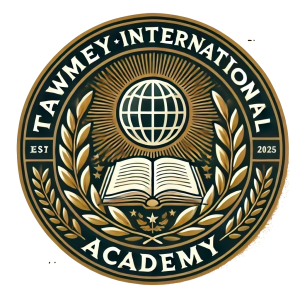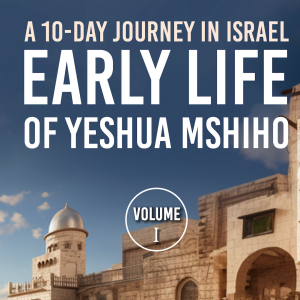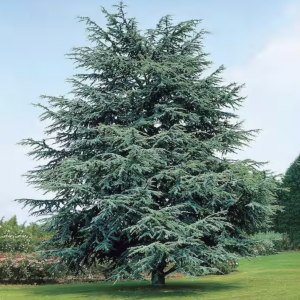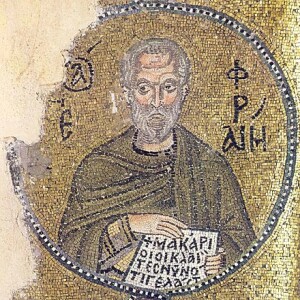Episodes

Wednesday Nov 13, 2024
A 10 Day Journey in Israel New book Volume one
Wednesday Nov 13, 2024
Wednesday Nov 13, 2024
Dear Friends and Supporters,
I'm thrilled to share that A 10 Day Journey in Israel is on its way to publication! This book aims to offer a fresh perspective on the life and teachings of Jesus, grounded in the historical and cultural context of the Middle East.
To bring this vision to completion, I’m reaching out for your help. Every donation brings us closer to sharing these insights with readers worldwide. If you feel led to support this project, please consider donating through the link below:
Thank you for being a part of this journey and for helping us bring this vision to life. Every gift is deeply appreciated.
Many Blessings
Andre

Friday Nov 22, 2024
Trees - Sacred Roots
Friday Nov 22, 2024
Friday Nov 22, 2024
Twins Tours Academy website:
https://www.twinstours.com/academy
Twins Tours Academy Free Weekly Webinars
https://www.twinstours.com/webinars
Subscribe to Twins Tours Academy Youtube Channel
https://www.youtube.com/twinstours
Follow him on instagram
https://www.instagram.com/twinstours
For Donations to support the media teachings
https://www.twinstours.com/give
Or send us an email at
info@twinstours.com

Friday Nov 29, 2024
Sacred Plants of the Hebrew Bible: Symbols of Hope and Resilience
Friday Nov 29, 2024
Friday Nov 29, 2024
In the Hebrew Bible, plants are more than just part of the landscape—they carry deep spiritual
and symbolic meanings, often serving as metaphors for hope, resilience, and divine presence.
These sacred plants offer us valuable lessons on endurance and faith, teaching us how to thrive
even in the most challenging times. From the burning bush that signaled God's first call to
Moses, to the humble olive tree that symbolizes peace, these plants stand as emblems of strength, perseverance, and the enduring spirit of the people.
For more online teachings www.twinstours.com/academy

Tuesday Dec 03, 2024
New Book - A 10-Day Journey in Israel: Volume 1
Tuesday Dec 03, 2024
Tuesday Dec 03, 2024
How You Can Get Involved:
-
Donate: Your financial support will directly help bring this project to life: www.twinstours.com/give
-
Share: Spread the word! Share this campaign with friends, family, and anyone who loves a good story.
-
Pray: Your prayers and encouragement are invaluable to reaching this goal.
Together, let's ensure this book reaches readers everywhere, offering fresh insights into Jesus' life from an Aramaic mindset.
Andre

Friday Dec 06, 2024
From the Majestic Cedar of Lebanon to the Humble Hyssop
Friday Dec 06, 2024
Friday Dec 06, 2024
The Cedar and Hyssop:
The cedar tree, a symbol of strength, has great importance in biblical symbolism,
representing pride and human strength. In contrast, the hyssop, often found growing in
cracks and walls, embodies humility and resilience, symbolizing purification in spiritual
rituals. Together, they offer us lessons in balance—strength and humility must coexist.
A Spiritual Journey:
As we walk through the land, the symbols of the cedar and hyssop come to life. The
cedar reminds us to stay grounded, and strong, while the hyssop teaches that true
strength often comes from simplicity. Both reflect qualities that are as timeless as the
land itself.
Join Us on a Journey:
At Twins Tours, we offer more than just a trip—we offer a chance to live the Bible. Our
immersive experiences help you connect deeply with the spiritual and historical
significance of the land.
Let’s walk the path of wisdom, just as King Solomon did.
for more in depth online teachings go to:
www.twinstours.com/academy

Monday Dec 16, 2024
The Cave of Christ's Nativity Syriac Tradition and Theology
Monday Dec 16, 2024
Monday Dec 16, 2024
In Syriac tradition and Eastern Christianity, the cave of Christ’s birth is far more than a historical setting; it is a symbol of profound theological truths:
- Humility: The Infinite God chose a lowly cave as the place of His birth, emphasizing the humility of the Incarnation.
- Light in Darkness: The cave symbolizes a world darkened by sin, now illuminated by the Light of Christ.
- Typology: The cave of Christ’s birth prefigures the cave of His tomb, linking the Incarnation to the Resurrection.
- Creation’s Renewal: The earth itself (the cave) receives its Creator, pointing to the redemption of all creation.
For Syriac Christians, the cave is not merely a location but a theological icon—a place where heaven and earth meet, where the eternal Word becomes flesh to bring light, life, and salvation to the world.
For more in depth teachings check our online Academy: www.twinstours.com/academy

Thursday Dec 19, 2024
Aramaic Shepherds and the Birth of Christ
Thursday Dec 19, 2024
Thursday Dec 19, 2024
This podcast episode explores the significance of Aramaic shepherds in the context of the nativity story, examining their cultural, linguistic, and theological roles. It highlights how their everyday language, Aramaic, and their profession as shepherds resonated with existing biblical imagery of God as shepherd and messianic expectations. Their humble social standing underscores the Gospel's message of divine favor towards the marginalized. The shepherds' witnessing of Jesus' birth and subsequent proclamation of the good news further emphasizes their vital role in the narrative of redemption. Their story connects the Old and New Testaments through shared pastoral imagery and theological themes.
For Free weekly teachings check our website www.twinstours.com/webinars

Friday Dec 20, 2024
The Magi ( Majousha) in Aramaic Tradition
Friday Dec 20, 2024
Friday Dec 20, 2024
The Journey and Their Mode of Travel:
- Syriac texts emphasize that the Magi came on horses, not camels. Horses were symbols of royal authority and swiftness, aligning with their role as emissaries of a kingly mission.
- This detail contrasts with Western Nativity scenes that traditionally depict camels.
2. Timing of Their Visit:
- Syriac and broader Eastern traditions suggest the Magi visited Jesus when he was a toddler, not a newborn.
- The star (ܟܘܟܒܐ) is often interpreted in Syriac tradition as leading them to a house rather than the manger (Matthew 2:11).
3. The Twelve Names of the Magi:
- According to Syriac tradition, there were twelve Magi, each representing different regions of the East.
- Names (examples from Syriac manuscripts):
- Hormizd
- Yazdegerd
- Peroz
- Dadharses
- Shabur
- Ardachshir
- Mihryar
- Narsai
- Ashkhen
- Tirdat
- Anushirwan
- Satarbukh
- These names reflect their possible Persian and Aramaic cultural affiliations.
for more teachings of Aramaic scripture check Twins International Academy www.twinstours.com/webinars

Saturday Dec 21, 2024
The Star of Bethlehem_ An Aramaic Perspective
Saturday Dec 21, 2024
Saturday Dec 21, 2024
The text explores the Star of Bethlehem narrative in Matthew's Gospel through an Aramaic linguistic and cultural lens. Aramaic word choices, like kawkav (star), highlight the story's divine and Messianic significance, connecting it to existing Jewish prophecies and Near Eastern astrological traditions. The magi's interpretation of the star reflects a cross-cultural understanding facilitated by Aramaic, a common language. Finally, the text analyzes the star's symbolic representation of divine light and guidance, tying it to broader Semitic and Jewish imagery.
for more in depth teachings check our website:

Sunday Dec 22, 2024
Beth-Lehm in Aramaic (House of Bread)
Sunday Dec 22, 2024
Sunday Dec 22, 2024
The text explores the multifaceted significance of Bethlehem's name, "House of Bread," within a first-century Aramaic context. It examines the linguistic roots of the name, highlighting the symbolic importance of bread in Aramaic culture as representing sustenance and divine provision. The text then connects this symbolism to Jesus's identity as the "Bread of Life," emphasizing the theological implications of his birth in Bethlehem. Further, it explores the cultural and agricultural context of Bethlehem, linking its identity as a place of provision to its role in Messianic prophecy. Finally, the text examines the enduring legacy of this symbolism in early Syriac Christianity, showcasing its influence on theological reflection and liturgical practices.
For more in depth teaching check our online Aramaic Academy

